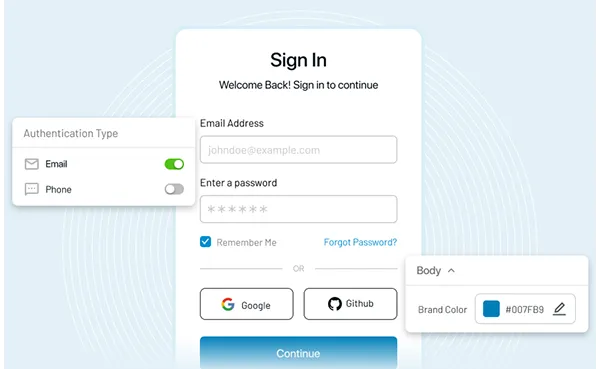Internal communication is a gratifying profession. By bridging the gap between employees and the management, internal communication facilitates information flow to every last employee in an organization.
In this article, we'll take a closer look at what internal communication means for organizations, why businesses need to have an internal comms plan, and look at some of the best strategies for B2B tech companies.
What is Internal Communication
Internal communication can be defined as the key to delivering excellent customer experiences solutions. Besides the broader day-to-day function of facilitating employee interaction, internal communication strategies also involve employing a standard, agreed-upon style and mode of language about a company and its products communicated to the outside world.
An effective internal communications plan acts as a guide to keep team members informed about a company's goals and initiatives.
Internal communications professionals produce messages on behalf of the company and the higher management and facilitate two-way communication between the organization and its workers.
Successful internal communications planning involves promoting company culture for better employee engagement and effective communication at all times. For any organization to achieve its business goals, it must have the support of its workforce.
An effective internal communication strategy and a communications plan to execute it are crucial for a business's success. Internal communication efforts do more than ensure effective communication.
They also create an engaging, community-like environment to build lasting relationships based on trust and use internal communication channels to gather employee feedback to improve their offerings continually. Effective internal communication makes workers feel cared for and helps them thrive at their jobs, leading to an organization's overall success.
Internal communications 2021 have become significantly more challenging on account of the pandemic. Now, with a majority of the workforce working from home and with companies forcing to lay off their employees, internal comms have to develop new strategies and communication tools to keep the staff working from remote locations apprised of the situation without causing alarm with the no hassle of leading and managing remote teams.
This article shall look at some of the best international communication strategies and internal communication best practices to help organizations weather these difficult times. But first, we'll explore why businesses must have an internal communications plan.
3 Reasons Why You Need an Internal Communications Plan
We open with a hard fact: Workforce engagement can make or break your business. Right from recruitment and retention of an employee to customer service success and safeguarding the customer experience, employee engagement is crucial.
Internal communication is the tool with which companies can achieve higher levels of employee engagement by building trust, helping team members understand the direction in which the company is going, and, more importantly, their role in achieving its vision and goals.
Let's take a look at the reasons why you must have a plan.
1. To turn your employees into your brand advocates.
Your employees are the ones that deliver your brand's promise to your customers. It is, therefore, essential to view internal comms as an internal marketing/branding exercise.
Companies can tailor messages to provide an exceptional experience for their employees by knowing the audiences and their goals. This, in turn, makes the staff believe in the brand and turns them into brand advocates.
2. To promote company culture and build employee trust.
Better employee engagement drives dialogue, promotes inclusive values, and has more employees communicating about their shared vision for the company. When your workforce feels seen and heard, trust and engagement will flow, resulting in a robust corporate culture.
3. To avoid reinventing the wheel in the absence of a plan.
Lack of an effective internal communications strategy can lead to confusion, decreased productivity, and cause employees to become disillusioned with your organization and lose focus.
Not having a plan can be disastrous, and that's not exclusive to internal comms alone. Draw up goals and objectives and achieve them to lead your employees in the right direction efficiently.
8 Internal Communications Strategies for B2B Tech Companies
1. Know your position.
Companies need to know what they are, what they represent, and what sets them apart from their competition.
More importantly, companies must also learn how to effectively talk about these aspects and communicate them to their employees to have their facts straight.
Companies are better served by discussing their objectives honestly with their workforce to achieve the best results.
2. Ensure smooth communication flow.
Internal comms must create a communications workflow that specifies who and where information comes from.
Communication and collaboration among various departments and teams, especially sales and marketing, is critical to achieve sales objectives and meet quality targets.
3. Simplify your communication.
One of the communication best practices is keeping things simple. Complicated messages can be easily misinterpreted and lead to the spread of misinformation.
We know how quickly messaging can get complicated in B2B tech. When developing messages, include the sales, product, and marketing teams to ensure clarity, accuracy, and easy delivery.
4. Centralize your message.
Focus on simplifying the content creation process to the best possible extent. Create a list of materials that your sales teams need for their products. This ensures that sales teams have an equal number of content pieces for their products.
Centralize information by preparing master documents with facts about the company and provide access to your teams to update them as necessary.
5. Provide training.
Whenever a new product is released or a significant update is announced, gather your staff in training sessions to roll out these developments. Offer mandatory training to support and operations teams as well to ensure everyone is on the same page.
Make sure that these training sessions, virtual or otherwise are creative and fun while being instructional to ensure maximum retention.
6. Facilitate open communication between teams.
The best communication tools will not work if sales and marketing are not aligned. Equally important are sales-product and sales-support alignments. Encourage open communication between teams to make it easy for them to ask questions and get the required clarifications.
Roll out company-wide initiatives where members from different departments can meet, albeit virtually, and connect and exchange knowledge.
7. Send internal newsletters.
Newsletters are a mainstay in most c and the best way to keep employees informed. Create monthly newsletters with information that staff members need to know, such as product updates, upcoming events, announcements from key stakeholders, staff changes, etc., to keep employees in the know.
Newsletters are also a great way to reward employee accomplishments, create motivation through recognition of extra efforts, and facilitate communication among the workforce. Newsletters can also be shared on social media to increase brand visibility.
8. Hire individuals who respect your company culture.
During the interview process itself, check if candidates' values align with those of the company. Make value alignment part of the evaluation process to successfully hire individuals that respect your company culture and provide the best fit to propagate your company values to others.
Internal communications 2021 especially requires comms professionals to remind the workforce of the organization's mission and values and consistently reinforce their belief in the system in this pandemic.
Conclusion
All the above internal communication strategies are tried and tested. See which one works best for your organization, and eventually, you'll be able to come up with your strategies that aid in your business's growth.


















